Budapest has a breathtaking view, whether it’s day or night. Whether you’re a history buff like me or not, you’ll definitely enjoy it. The architecture is magnificent, the Christmas market is worth visiting, and Budapest is one of the most affordable cities in Europe that I’ve ever visited.

When people think about traveling to Budapest, they usually imagine a grand European city formed by three towns: Buda, Pest, and Óbuda. But long before Buda, Pest, and Óbuda merged into one large city, Buda had been the seat of the Hungarian Kingdom’s government since 1361. King Béla IV of Hungary (founded in the year 1000) felt the need to build a capital on a hill to protect it from enemy attacks.
In the 16th century, Hungary was conquered by the Ottomans (Turkish Ottoman Empire) and remained under Ottoman rule for over 150 years. Even though the Ottomans ruled Hungary for quite some time, there are only a few remnants of Ottoman heritage in this Central European country today. Wars, religious conflict, and the need for building materials caused almost all Ottoman remnants to disappear. Of the hundreds of mosques in Hungary, fewer than 10 remain today, one of which is Pasha Qasim Mosque in the city of Pécs. Of the 16 hammams (Turkish baths) built by the Ottomans, only 3 remain (Rudas, Király, and Veli Bej). Another Ottoman relic you can find when traveling to Budapest is the tomb of the 16th-century Ottoman Sufi, Gül Baba.
At the end of the 17th century, a coalition of Catholic European countries worked together to repel Ottoman forces. Buda was successfully reclaimed from the Ottomans, and by 1718, the entire Kingdom of Hungary was free from Ottoman occupation. After that, the Austro-Hungarian monarchy was formed, and Buda was merged with Pest and Óbuda in 1873 to become Budapest, one of the capitals of Austria-Hungary alongside Vienna. After World War I, Austria-Hungary dissolved, and the country of Hungary was established. At the end of World War II, Budapest suffered significant damage from American and British air raids. After Germany’s defeat, Hungary fell under Soviet influence and became part of the Eastern Bloc. In 1989, when communism collapsed, Hungary transformed into a democratic country as it is today.
Traveling to Budapest, Hungary: How to Get There
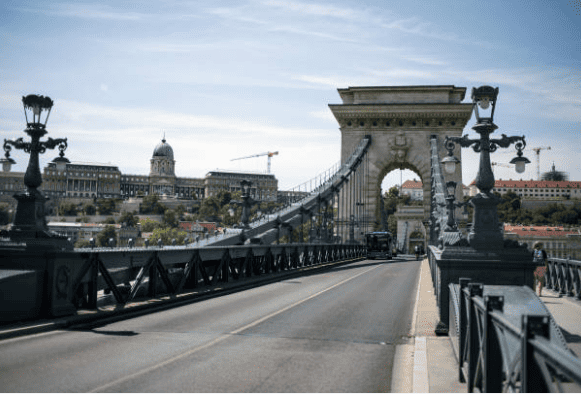
When I traveled to Budapest, I took a bit of a detour. If you look at a map of Central Europe, after visiting Vienna, Austria, I should have continued to Bratislava, Slovakia, and then gone north to Prague, Czech Republic. But instead of heading directly to Prague, I went from Bratislava to Budapest, which made the trip from Budapest to Prague longer.
I took a RegioJet bus from Bratislava, which took about 3 hours. In the afternoon, I arrived at Kelenföld Railway Station in Budapest. I bought my bus ticket on Omio, an app I always use during my European trips. Meanwhile, the journey from Budapest to Prague took 8 hours by RegioJet bus. If you want to visit Prague after traveling to Budapest, besides taking the bus as I did, you can also fly. However, the travel time isn’t much shorter than the bus due to the transit, and the price is much higher. So, if you ask me, I’d suggest taking the bus.
Traveling in Budapest: Getting Around
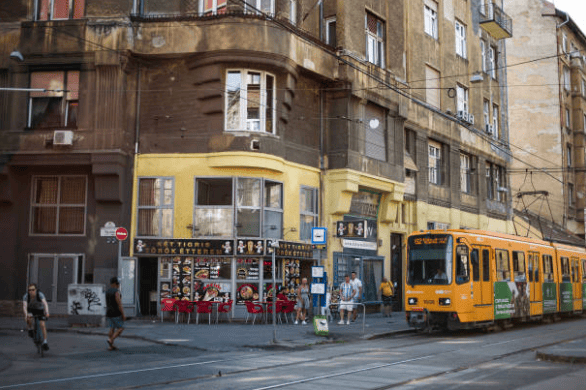
As always, during my time in Europe, including when traveling in Budapest, I mostly walked to explore the city. Besides, I stayed in Pest, which is the economic and cultural center of Budapest, so it wasn’t hard to get around. But when my feet were tired or when I needed to cross over to Buda, I took the tram.
Almost all the tourist attractions, restaurants, bars, and thermal baths are located in the city center, so it’s best to walk to these places when traveling in Budapest. Even the Széchenyi Thermal Bath, which is a bit further from downtown, can be reached by a 40-minute walk along Andrássy Avenue. When I crossed over to Buda by foot via the Chain Bridge (375 meters), the view was simply stunning, especially at night with all the city lights. Unfortunately, the next day when I hiked up Gellért Hill, the weather was cloudy, and the city view was covered in fog.
Budapest actually has a good public transport system, so don’t forget to use it, especially if your feet are sore from too much walking. You can take the subway, tram, or bus depending on your destination by checking the schedules and routes on Google Maps. One of Budapest’s metro lines, The Millennium Underground (1896), is the oldest subway line in Europe and is now a UNESCO World Heritage Site. Subway tickets can be purchased at subway stations, vending machines at bus stops, or through apps. A single ticket costs 1 Euro (HUF 350). There are also daily, 3-day, and weekly tickets available.
To reach the Hungarian Parliament Building and Buda Castle, you can take tram no. 2, while bus no. 16 will take you from the city center to Castle Hill. Other public transport options you can try while traveling in Budapest include cycling and electric scooters. To get from Ferenc Liszt International Airport to the city center, you can take the airport shuttle bus (100E) with a ticket price of 3 Euros (HUF 900), which takes about 30 minutes.
Things to See & Do in Budapest
1. Hungarian Parliament Building
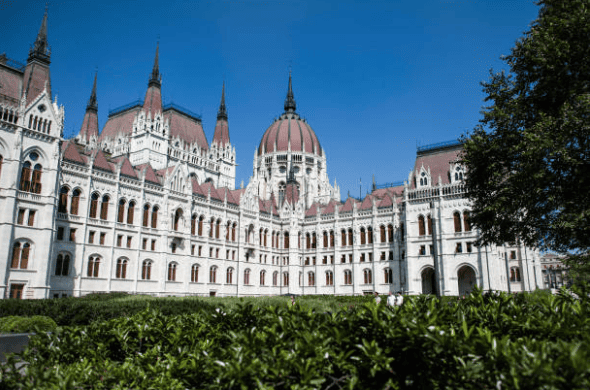
This iconic building is a must-see when traveling to Budapest. The Gothic-style Hungarian Parliament Building is awe-inspiring during the day and even more so at night when it’s illuminated with golden lights! The best place to admire it is from across the Danube River.
Built over 17 years, the Parliament is part of the UNESCO World Heritage Sites. Don’t miss seeing the Holy Crown of Hungary housed in the Dome Hall since 2000.
2. Buda Castle
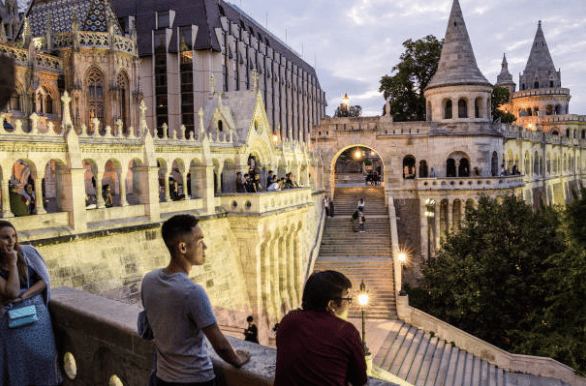
Located on Castle Hill, this castle complex was the residence of Hungarian kings throughout the ages. The architecture ranges from Gothic, Baroque, to Neoclassical, making it a must-visit for history and architecture lovers. You can also visit the Hungarian National Gallery and the Budapest Castle Museum.
3. Fisherman’s Bastion

One of the most beautiful spots in Budapest. It’s a viewing terrace with seven towers symbolizing the seven Magyar tribes that founded Hungary. Built between 1895 and 1902, it offers incredible views of the city.
4. Matthias Church
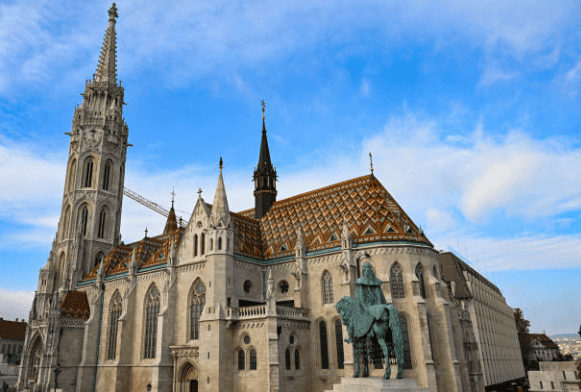
Located near Fisherman’s Bastion, this Roman Catholic Church, restored in Gothic style in the 14th century, is stunning. Two Hungarian kings were crowned here. The entrance fee is 2000 HUF (5.72 Euros).
5. Gellért Hill

For the best panoramic view of Budapest, hike up Gellért Hill. The hill, named after Hungary’s first missionary, offers a view of both Buda and Pest, as well as the Danube River. Attractions here include the Citadel, Liberty Monument, and Cave Church.
6. Shoes on the Danube Bank
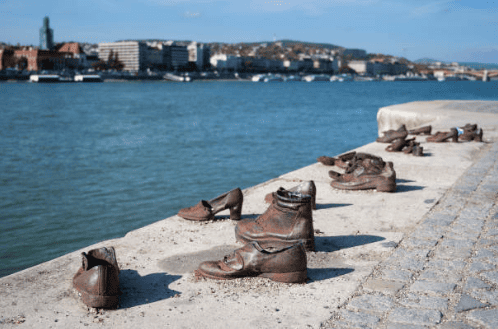
This memorial commemorates the Holocaust victims killed by the Nazis during World War II. 60 pairs of iron shoes along the riverbank symbolize the victims forced to remove their shoes before being shot.
7. Margaret Island

Budapest’s “Central Park” in the middle of the Danube River. You can enjoy walks, cycling, visit the Rose Garden or Japanese Garden, and relax at the Palatinus thermal baths.
8. Széchenyi Chain Bridge
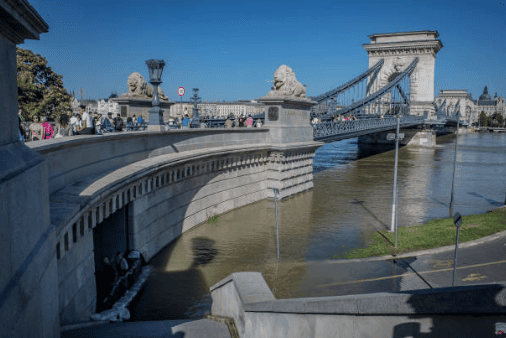
The first permanent bridge connecting Buda and Pest. Destroyed during World War II, it was rebuilt and remains one of Budapest’s most famous landmarks. Note: The bridge is under renovation until 2023.
9. Thermal Baths
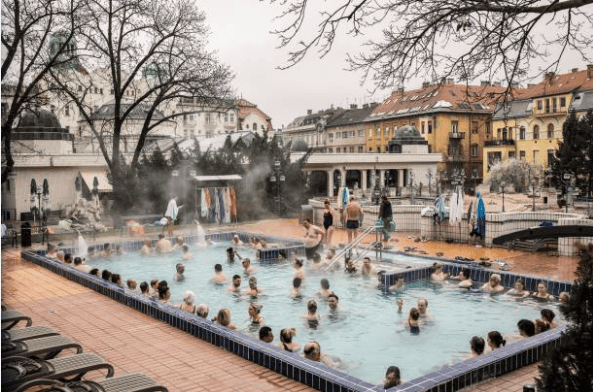
Budapest has 120 thermal springs, earning it the nickname “City of Baths.” Széchenyi Baths, the largest in the city, offers pools with varying temperatures, saunas, steam rooms, and whirlpools. The Gellért Baths, near Gellért Hill, is renowned for its beauty and varied temperature pools.
There are so many attractions in Budapest that I couldn’t visit them all during my trip. Maybe next time, when the borders reopen, I’ll visit Hungary again.

Thank you for your sharing. I am worried that I lack creative ideas. It is your article that makes me full of hope. Thank you. But, I have a question, can you help me?
Fortunately, this conversion of testosterone to
dihydrotestosterone from Dianabol is relatively
low, so DHT ranges shouldn’t spike an extreme quantity of with this steroid.
Nonetheless, if you’re considering using a drug like the 5a-reductase inhibitor
(anti-androgen) Finasteride to deal with hair
loss, it is unlikely to be efficient towards Dianabol.
Dianabol has a status for being a steroid that causes noticeable, rapid, and sometimes extreme bloating or fluid retention, especially in the early stage of
a cycle. This leads to a telltale puffy look, including
on the face, and can point out to other people fairly quickly that
you’re utilizing steroids.
They created a revolutionary wave within the health
world, introducing groundbreaking workout regimes that pushed the boundaries of conventional health and physique aesthetics.
Ronnie’s strength wants were monumental, and it may have potentially been a
part of his regimen to help him attain his distinctive power goals.
We asked our sufferers what the “best steroids to get ripped” are and received completely different answers.
A Quantity Of of our female sufferers have reported using the above cycle when taking oral Primobolan. These cycles are suitable for
somebody who wants to get ripped but doesn’t wish to inject.
Testosterone does not notably have an effect on the liver,
with it being injected straight into the bloodstream.
This can be attributed to Winstrol drying out the body, leading to less cushion for the joints.
Methenolone is a DHT-derived steroid obtainable in each oral and injectable forms,
with the injectable often identified as Primobolan Depot.
The injectable version is taken into account much more highly effective than the oral type and, as
such, is extra well-liked amongst bodybuilders and efficiency athletes.
The most useful results of Primobolan embody
its ability to boost nitrogen retention and keep the body in an anabolic state.
One of the downsides and reasons this isn’t a broadly
used steroid is that Proviron has lower bioavailability than different oral compounds.
Whereas these elements play a task, the necessary thing lies in understanding tips on how to strategically strategy your coaching and supplementation. The
primo check cycle isn’t just another fad or fast repair; it’s
a meticulously designed routine backed by years of analysis and experience.
In this comprehensive guide, we’ll uncover the science behind Methenolone and break down the precise steps you want to follow to achieve
remarkable results. When does somebody transfer from the apprentice stage and into the midway domain? Sadly there isn’t
any easy one size fits all answer, as we are all folks with particular
person natures and goals.
Understandably, new customers are going to be hesitant to make use of
injections more typically than not. After all, it’s a
big step to make that call to inject your self with a substance.
Hey, I’m Joe, and I think about myself only a common mid-40s man who
occurs to have a fantastic interest in steroids
and what they’ll (and can’t) do for us. I’ve been involved in studying every thing there may be to find
out about steroids for many of my grownup life, and my aim is to assist others such as you study your first steroid cycle.
As a result, the FDA has prohibited the sale of a quantity of peptides formerly favored by bodybuilders and fitness fanatics as a result of their purported muscle-building and performance-enhancing attributes.
An optimum dose is 200 to 400mg weekly for12 weeks, promoting muscle building and
joint healing. This cycle combines a milder anabolic and a harsh
one, yet it produces beneficial outcomes by method of anabolism and reduced
fats mass. A few of our feminine patients have
seen their menstrual cycles becoming irregular, especially on larger doses and toward the tip of their cycle.
Nonetheless, clenbuterol’s most potent trait,
in our experience, is its metabolic effects.
In our expertise, blood stress will improve at a fee that is corresponding to
Anavar somewhat than harsher anabolic compounds. It isn’t administered by itself, as it reduces androgenicity,
probably inflicting sexual side effects, including impotence.
Therefore, it is usually stacked with Anadrol, testosterone, or trenbolone.
Trenbolone has a stimulating effect on the central nervous system,
triggering thermogenesis and aiding fats burning.
For example, Winstrol is commonly stacked with testosterone, Dianabol, or Anadrol to
help promote muscle development and improve power positive aspects.
The particular combination of drugs used will depend on your individual goals and wishes.
A steroid cycle is the period whenever you use anabolic
steroids to succeed in a selected goal. For bulking, cycles typically
final 8 to 12 weeks and contain a mixture of steroids to achieve muscle mass and strength as shortly as possible.
If you’re going to run a Winstrol cycle,
take a look at my full Winstrol (Stanozolol) cycle information. With the
correct dedication to your coaching and diet, achieving substantial
dimension gains in 20 pounds is greater than potential within mere weeks.
Since a Dianabol cycle should run for not than six weeks, you’ll have the ability to expect critical
adjustments and results inside that short period.
Some individuals may experience androgenic negative effects of anabolic steroids (cultivodesetas.es) like acne or hair loss,
and this is not a steroid that ladies should use. Ldl Cholesterol changes, testosterone suppression, and liver toxicity are all other unwanted effects to listen to with Anadrol.
General, Anadrol is a potent weapon to have
in your steroid arsenal and can present a mighty boost to your bulking cycle when used
with different bulking compounds. If you’re going to run an Anadrol cycle, check out my full Anadrol (Oxymetholone) cycle information.
70918248
References:
are anabolic steroids legal (blog.avisandover.org)
70918248
References:
illegal steroids, http://www.restgarage.jp,
Your point of view caught my eye and was very interesting. Thanks. I have a question for you.